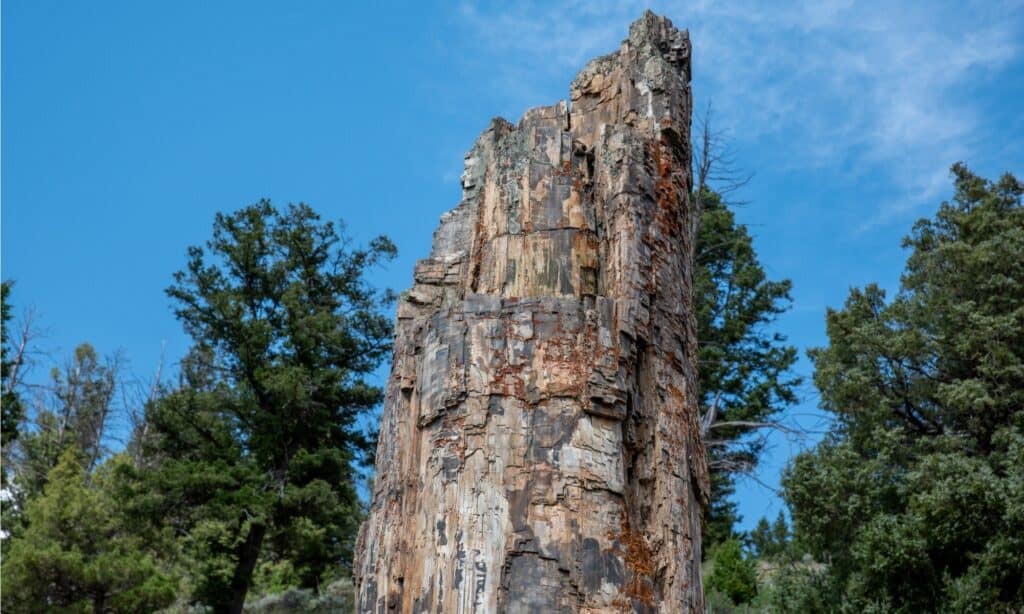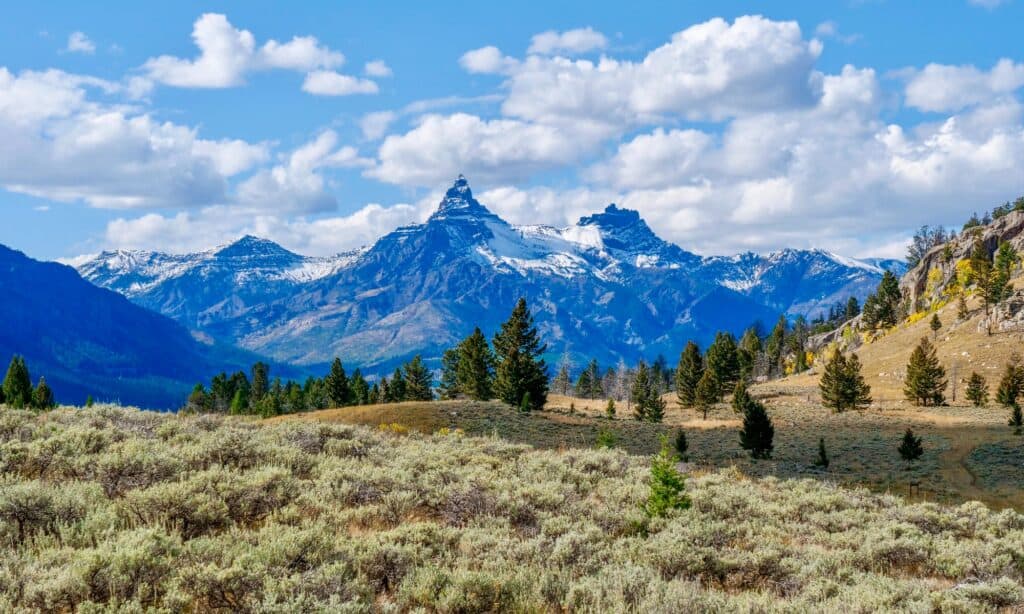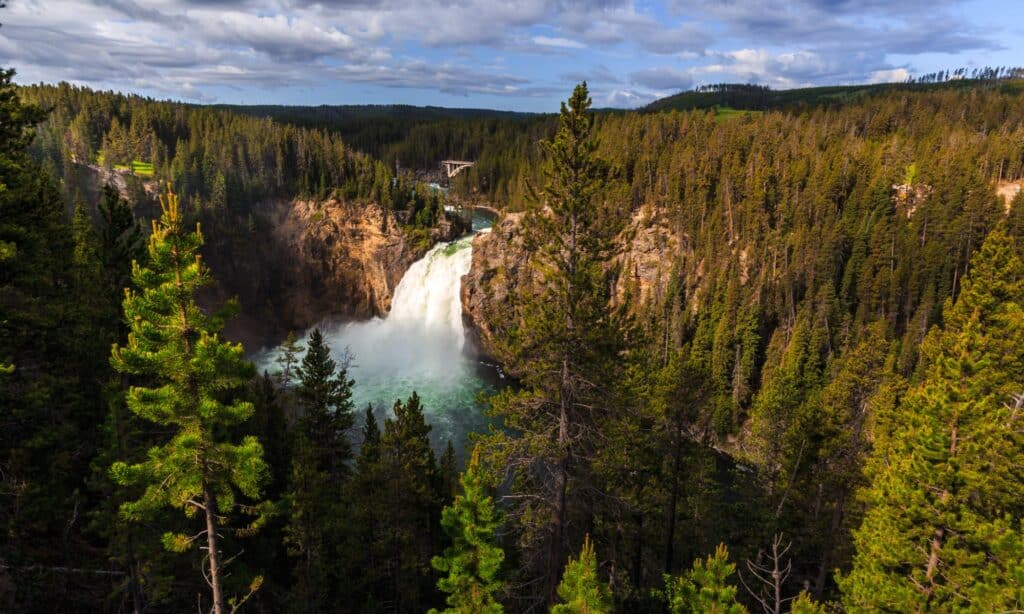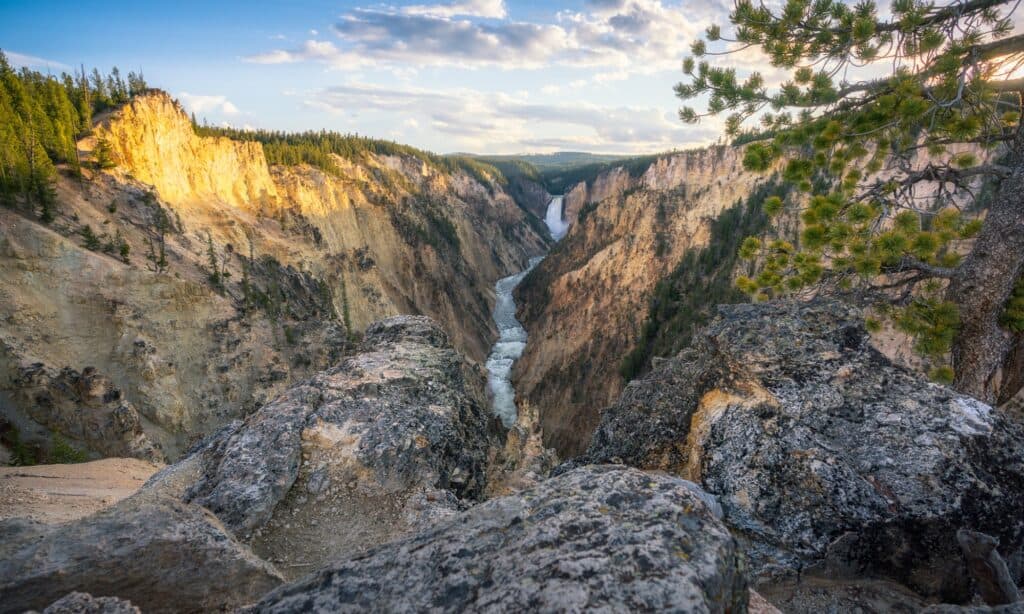With all of the unique landscapes and features found within Yellowstone National Park, have you heard of Yellowstone’s petrified tree forest? This region of the park isn’t talked about as often as Yellowstone’s waterfalls or geysers, but the petrified forest of this National Park is among the largest in the world.
If you’ve never heard of Yellowstone’s petrified tree forest, you’re in the right place. We’re going to address just how large this area is, and how exactly this region came to exist. Plus, we will even go over where you can find this region of the park, and what exactly you can see in this beautifully preserved area. Let’s get started and talk all about Yellowstone’s fossils now!
Yellowstone’s Petrified Tree Forest: An Overview

Yellowstone’s petrified tree forest formed primarily because of volcanic activity in the region.
©iStock.com/rmbarricarte
Specimen Ridge is located near Lamar Valley in Yellowstone National Park. Known as Specimen Mountain back in the 1800s, this region of the park became famous for its abundance of valuable fossilized specimens, opals, amethysts, and other unique features. One of these unique features has to be the sheer number of petrified trees located along the ridge.
Yellowstone’s petrified tree forest is special and unique for a number of reasons. While Yellowstone Park Rangers have had to install special fences and protective structures to stop people from taking pieces from these beautiful trees, there is still plenty to experience and enjoy on your trip to Yellowstone.
While petrified wood may not sound very special when you consider that Yellowstone also has multiple waterfalls, geysers, and hot springs to explore, the petrified forest has been a source of necessary scientific study for nearly 150 years. Plus, you can take a trail through this enchanted forest and experience it for yourself!
But how exactly did these trees form, and what can you see should you choose to hike through this special section of Yellowstone National Park? Let’s take a closer look now.
How Did Yellowstone’s Petrified Tree Forest Form?

Just under ten miles in length, the Specimen Ridge keeps many of the trees found within the petrified forest safe.
©iStock.com/Joseph Tointon
Yellowstone’s petrified tree forest formed primarily because of volcanic activity in the region. The Absaroka volcanoes don’t exist anymore, better known now as the Absaroka Mountain Range. Long dormant, these volcanoes were active over 50 million years ago, and we have them to thank for the petrified tree forest and many other fossil records found in Yellowstone National Park.
The volcanic activity from these particular volcanoes was powerful enough to petrify an entire forest and region of Yellowstone. Ash, dirt, and other debris spewed forth and covered all surrounding vegetation and animals in the region. This led to a number of different fossils and petrified artifacts, including an entire forest encased in volcanic substances, hardened and acting as a preservative for these beautiful trees.
Having these fossil records and access to this region of Yellowstone is key to studying our early days on Earth. Volcanic eruptions often petrify ecosystems surrounding them, and there are even petrified forests surrounding Mount Saint Helens as well as Yellowstone. It’s a beautiful sight, seeing so many trees trapped upright or tumbled over in a state of absolute preservation!
How Large is Yellowstone’s Petrified Tree Forest?

If you are interested in seeing Yellowstone’s petrified forest up close, be prepared for some fairly strenuous hiking.
©iStock.com/Bartfett
Just under ten miles in length, the Specimen Ridge keeps many of the trees found within the petrified forest safe. However, many estimates state that Yellowstone’s petrified forest stretches roughly 40 square miles throughout the Absaroka mountains. And this seems more the case then not when you consider the elaborate number of trails found in this region of the park.
If you are interested in seeing Yellowstone’s petrified forest up close, be prepared for some fairly strenuous hiking. In fact, the Specimen Ridge Trail is not recommended for the average hiker, as it has steep elevation gains and uneven ground. You’ll begin on the Specimen Ridge Trail but continue down a fairly unmarked path that will lead you up to the petrified forest.
Given the fact that this fantastic trail is relatively difficult to find, it is recommended that you bring along a map. Many hikers mentioned that it is easy to lose your way on this particular path, so if you truly want to see this beautiful forest up close, make sure to take your time. The entire trip takes just over 16 miles round-trip, and many people need at least 8 hours to complete it!
What Can You See in Yellowstone’s Petrified Tree Forest?

While most of these trees will be stumps or fallen over, there are a number of upright petrified tree specimens found in Yellowstone.
©iStock.com/ChrisB
You can see a number of things along the Specimen Ridge Trail and in Yellowstone’s petrified tree forest. Not only are there amazing views from this location, but you can also see a number of different fossilized trees and plant species on your travels. Plus, this region overlooks the Lamar Valley of Yellowstone, which is arguably one of the best locations for viewing wildlife in the entire park!
The following trees exist within Yellowstone’s petrified tree forest:
While most of these trees will be stumps or fallen over, there are a number of upright petrified tree specimens found in this part of the forest. Interested in seeing these trees but concerned about the length of this particular hike? You can view a fantastic upright petrified redwood tree in the Tower area of the park. It stands like a sentinel for this ancient and fascinating region, and you can’t miss it!
The photo featured at the top of this post is © iStock.com/rmbarricarte
Thank you for reading! Have some feedback for us? Contact the AZ Animals editorial team.






